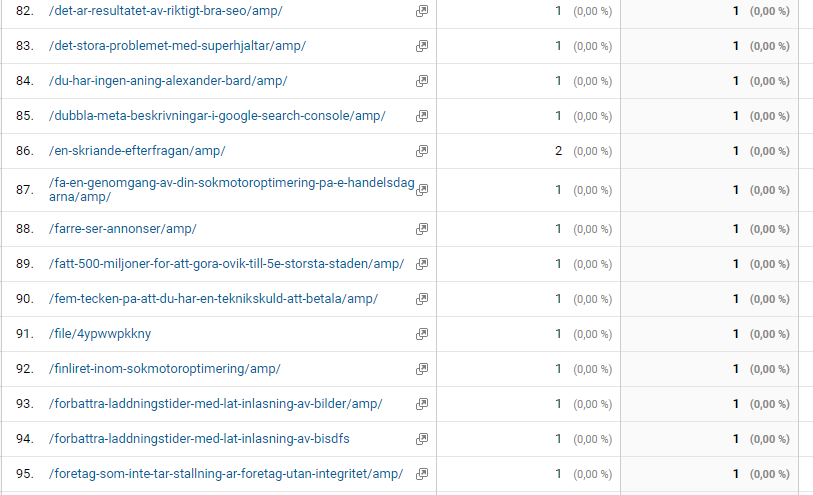
There’s content on your site that drags the rest down when it comes to how you appear in Google. Content that Google considers lower quality can hurt your rankings even for the content it deems good. July is the perfect month to fix this.
Activity in Sweden slows down significantly in July, at least for most industries. If you run a restaurant in a holiday destination you might not feel the same way, but if you’re selling knitted mittens you know what I mean. This means you can make relatively big changes to your site without risking too much – even if something goes wrong, you have time to fix it before the internet picks up again in August. One smart thing to do is to deal with your weakest content.
Find your weakest content

A good way to find content that doesn’t match the quality of the rest is simply to sort by what gets the least visits in Google Analytics. Behavior > Site Content > All Pages in Analytics, then sort by unique pageviews, pageviews, or entrances. If no one ever reads your content, then there’s a reason to address it.
Another way to find content that doesn’t seem to perform is in Google Search Console. Go to Coverage > Excluded > Crawled – currently not indexed. Here you’ll find pages that aren’t flagged as errors in Search Console but still aren’t indexed for some reason.
What should you do with these pages?
There can be many reasons why a page has no traffic or isn’t indexed by Google. What they all have in common is that if you deal with them, your site will perform better overall. Here are 4 tips for handling poor content:
1. Rewrite articles that have a solid core
Articles with value but perhaps the wrong format – maybe they’ve become outdated or are written in a way that no longer engages your readers – can be rewritten. Make them more comprehensive, better, and give them a fresh chance by resurfacing them.
2. Merge articles
Often you’ll have many articles on similar topics. It’s better to merge them and redirect one URL to the other with a 301 redirect. Make sure to include material from both articles when merging; otherwise, Google might ignore your 301.
3. Remove the weakest articles
Articles that are completely without value – really old news that’s no longer relevant or posts that are simply poorly written – are best removed. There’s no longer any advantage to keeping outdated, irrelevant content.
4. Enrich the content
Some articles are good but may lack structure. This could mean missing images, videos, headings, or bullet points. Simple adjustments can make your content perform well again.
Hope you’re having as nice a summer as I am – and good luck with your SEO.
